
Jupiter and Saturn are getting closer and they already look stunning in the early evening sky. This meeting or coming together is called a Conjunction and because these are the two largest and brightest planets in our solar system, this is the Great Conjunction. Viewing is available from now with the closest point on December 21st. They will look like a double planet when viewed from earth, shining brightly in an exceptional event.
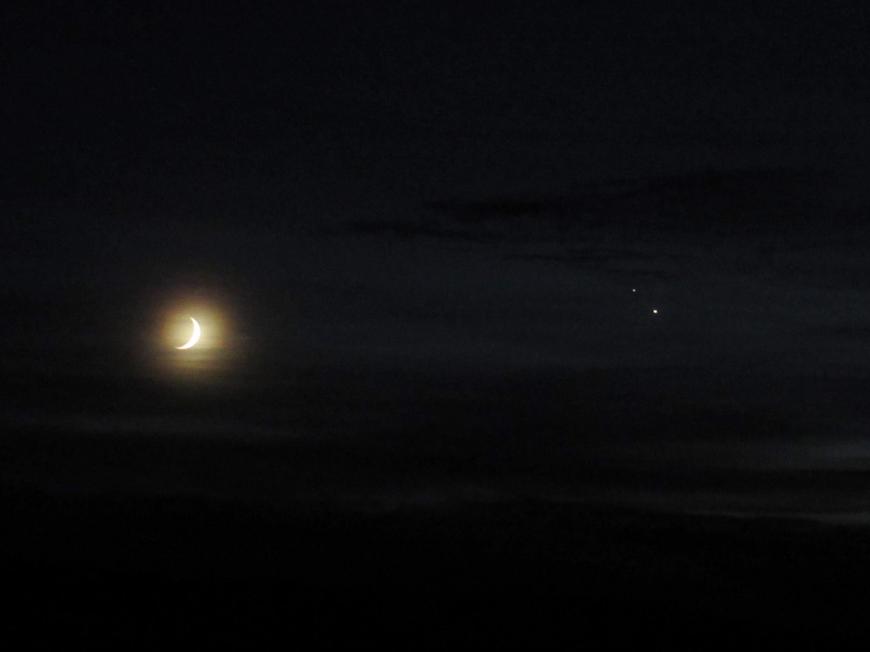
Outdoor free stuff, with a bit of learning, some fresh air and wonder has to be the way to go in 2020. You should be looking half an hour after sunset until about two hours after sunset with the climax being on the Winter Solstice. This is not really late at night or in the early hours, this is accessible viewing although still a bit chilly. Also, because it is a gradual process you can wait for your own weather window with a few key dates to aim for. There has been a lot of annoying cloud about recently.
From the 19th until the 23rd the planets will be close as they are slow-moving giants. The Great Conjunction is at 18:37 GMT on the Monday before Christmas. This is the main event, worth being out by 5pm. They will be lower in the sky if viewing from Shetland compared to the Channel Islands, so it is worth sorting your viewpoint early to see where works when looking southwest.
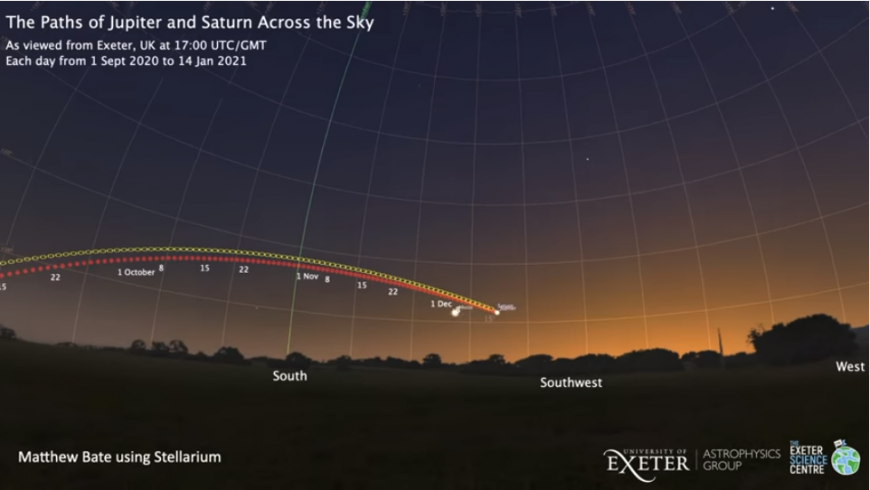
The sun sets in the west and rises in the east. You can download a compass app. (if a real compass isn't your thing) such as Digital Field Compass (Android) or Compass∞ (IOS) to help if you feel a bit disorientated by the time you’ve found a good spot. Strava or GoogleMaps can help you too. Using an app such as SkyView Lite will show you the names of the stars and planets as an overlay onto the sky.
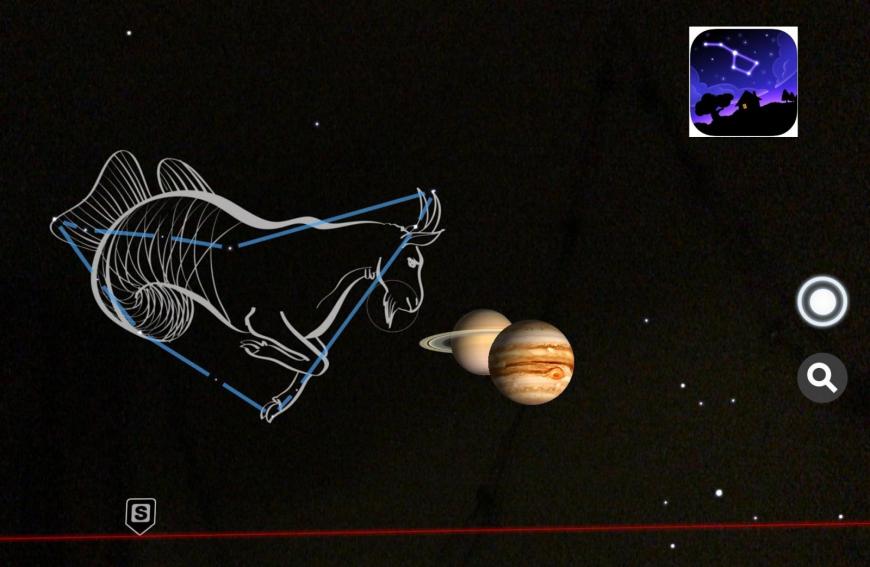
If you head out before the 21st, you will be able to find the planets in the sky and check the viewing and timings. Have a test astrophotography session, get to know the settings on your camera or phone. You might consider a tripod, how to keep warm and then be able to compare how the distance between the planets is changing if you do get a view on the 21st.
You’ll need a clear view of the SW horizon and a pre-check visit will show if there are buildings, trees or a hill in the way. You might choose to have a winter tree or building as part of your photo foreground. The reason you have to be out in the early evening is that the planets disappear from view below the horizon later in the night. Below SE Scotland 1st Dec 16:50
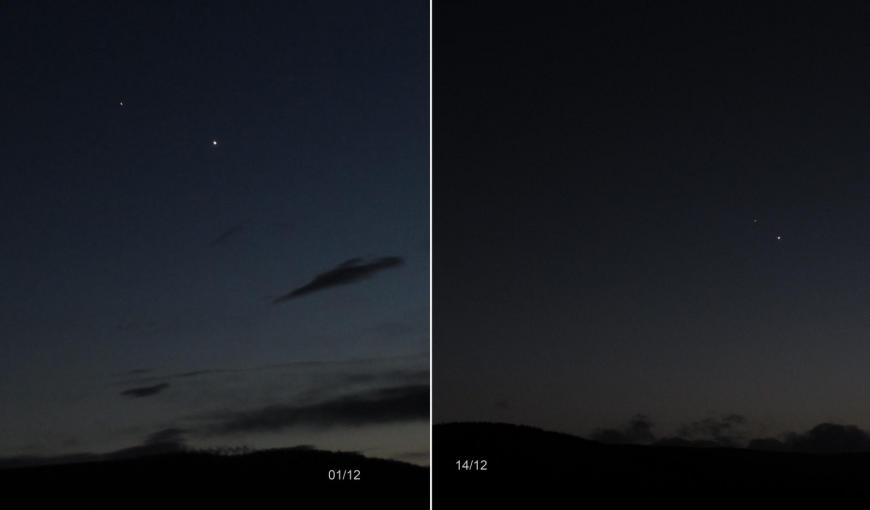
You can see this with the naked eye, once you are looking the right direction and have enough of the horizon available. Jupiter is the brightest thing in the sky (that’s not the moon). Find that low-ish in the SW sky and then look for Saturn, also bright but not as obvious. They don’t twinkle like stars, just shine steadily. Mars is bright in the night sky at the moment too but is much higher in the early evening and has a reddish tinge. Saturn has a yellowish tinge. The two gas planets do look special. Binoculars will allow you to see Saturn’s rings and the larger moons of Jupiter. For those with access to a telescope, by the 21st both planets will be on view together as a single shot. With Jupiter’s banding, Saturn’s rings and various moons on show.
This Great Conjunction is special because Jupiter and Saturn haven’t been this close since 1623. The Earth takes a year to move around the Sun (365 days), Saturn takes nearly 30 years and Jupiter takes nearly 12. These two do pass every 20 years but the next one, this close, will be in 2080 and will also be as stunning. Sometimes the sun’s glare makes the conjunction difficult to observe, however, this time we do have this early evening window. Although there is still the December surface weather to contend with.
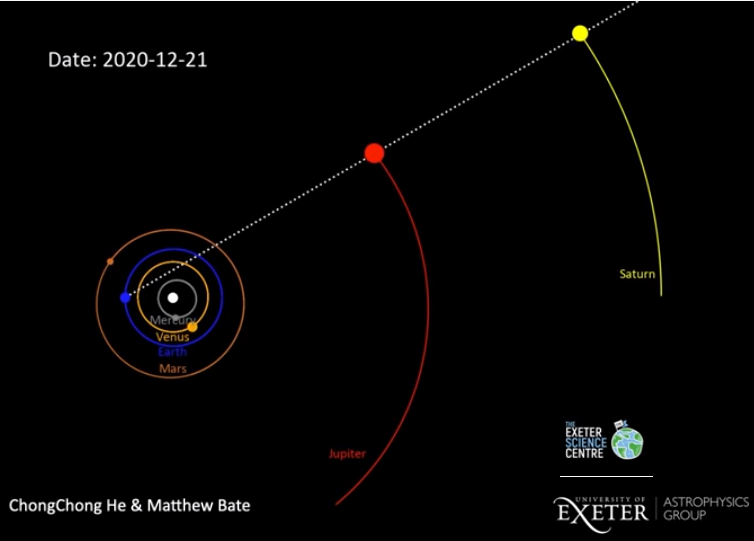
You might also catch glimpses of ‘shooting stars’. The Geminid meteor shower peaked around the 13th-14th December with plenty of bright meteors and no moonlight. It builds up from the 4th until the 17th. There will also be a few meteors in the Ursid shower peaking 21st-22nd but not many. Various satellites also work their way across the sky, you might see planes or the International Space Station ISS moving by. You can check out the times here.
Also, on the 16th and 17th a thin crescent moon added to the beauty of the twilight view.
What is particularly beautiful is that you can see the planets against the twilight sky, so the colours and silhouettes are visible. Being away from the bright lights of the city will help a bit and The Yorkshire Dales and North York Moors national parks have just been designated Dark Sky Reserves. This is for areas with low levels of light pollution and so good conditions for astronomy making it easier to see more stars and meteors. There will be some cracking photos this month no doubt.
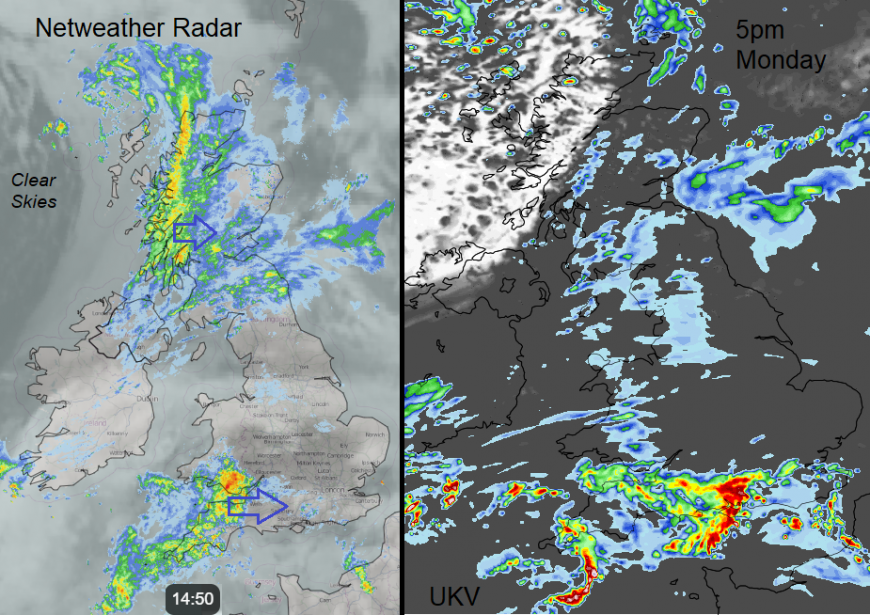
Several low pressures have been running in from the Atlantic, bringing a lot of cloud and rain, blustery winds and not ideal conditions. Another one is due to move through on Monday, which is disappointing and annoying. There could be clearer skies behind the fronts as the sun sets. It's going to be frustrating. Good luck for Monday early evening.
Think about where you can see the SW horizon. Find out the sunset time. For example, for Leeds on the 16th, it is 15:45 with the last of the light totally gone just before 6pm. Do a reccy in this time frame to find the planets in the sky, check for obstructions, remember the planets won’t be any higher by the 21st. Try out some photos, maybe noting down the camera settings to see what works best. If you can get a tripod, do and take a hat and wrist warmers, it’s cold out there. Fingers crossed for clear skies on the 21st.
More chat and discussion in the Netweather forum. The bright planets on view.
Loading recent activity...